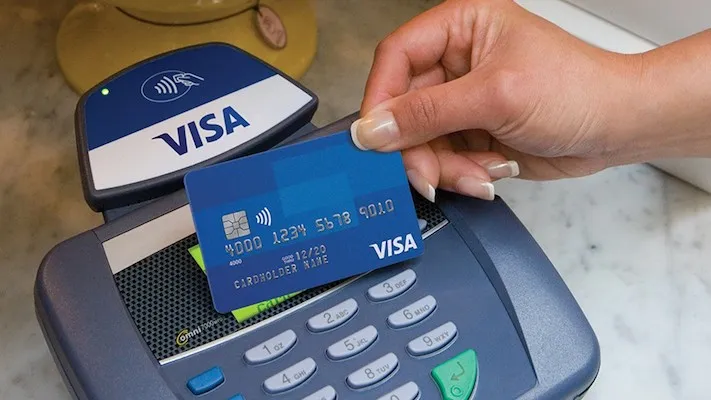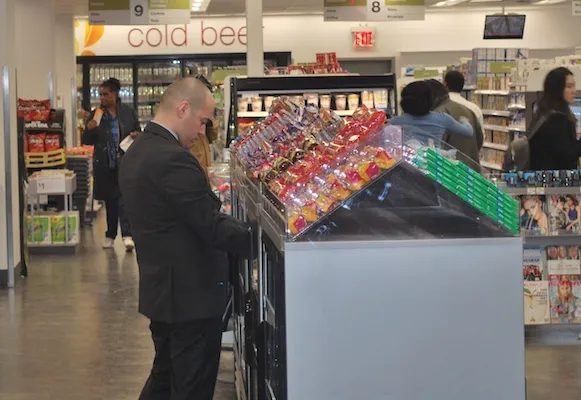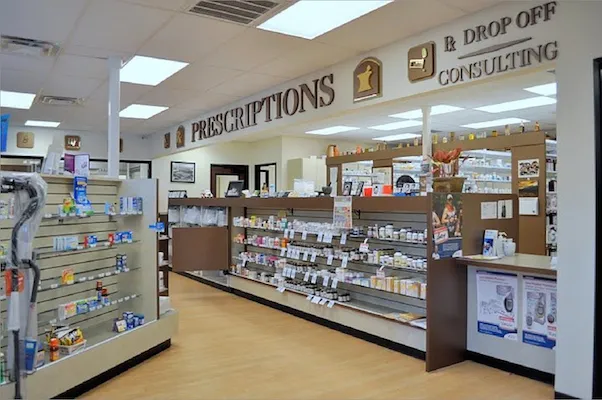The switch to chip-enabled payment cards is moving forward, but there’s still a ways to go, even as the deadline looms.
The inter-industry Payments Security Task Force (PST) said Wednesday that its eight financial institutions reported that 30% of their U.S. consumer credit and debit cards contain EMV chips as of June 30. These issuers represent about half of U.S. payment card volume.
According to the PST, the number of chip cards in the United States from these issuers is expected to rise to 60% by the end of this year and climb to 98% by the end of 2017.
As of Oct. 1, U.S. merchants who do not adopt EMV chip cards as their primary method of credit card payment may be liable for fraudulent transactions. These smart chips embedded within EMV cards are intended to make card fraud less likely. Though common in Europe and other regions around the world, the technology is just now being adopted in the United States.
Chip technology protects in-store payments from counterfeit card fraud. A small computer chip in the payment card uses cryptography to generate a one-time use code for every transaction, making it virtually impossible to create counterfeit cards. The technology comes in the wake of several high-profile security breaches at retail chains, notably Target Corp.
“The latest forecast demonstrates the tremendous progress made to make chip cards a reality in the U.S. Consumers are the winners, as issuers and merchants are both working to deliver greater protections when paying for a purchase,” stated Chris McWilton, president of North American markets at MasterCard.
MasterCard reported Wednesday that 40% of all U.S. MasterCard-branded consumer credit cards have EMV chip technology.
Also on Wednesday, Visa reported that as of Sept. 15, 151.8 million Visa chip cards have been issued in the U.S., up more than 655% in the last year alone, and over 314,000 merchant locations have been equipped with chip-activated terminals, up more than 470% from last fall. Visa said small businesses accoun for half of its chip payment volume.
A survey of PST acquirers estimates that about 40% of their terminals are expected to be capable of accepting chip cards by the end of the year.
Besides MasterCard and Visa, PST participants include American Express, Bank of America, Capital One, Chase, Citi, the Credit Union National Association, Discover, First Data, Global Payments Inc., Kroger, the National Association of Federal Credit Unions, Marriott, the Navy Federal Credit Union, Sheetz, Shell, Subway, U.S. Bank (Elavon), Vantiv, VeriFone, Walgreens and Wells Fargo & Company.
“This is a key milestone in a multiyear transition to chip technology in the U.S.,” commented Ryan McInerney, president of Visa Inc., said of the PST’s latest forecast. “The speed at which merchants are installing chip-enabled terminals and financial institutions are issuing chip cards demonstrates the industry’s commitment to investing in technology to protect consumers.”
Despite the gains in adoption, a new CreditCards.com report said Wednesday that more than six in 10 U.S. credit cardholders still don’t have a chip-enabled credit card as of the day before the industry’s deadline, set almost two years ago. The online credit card marketplace said its survey shows that banks aren’t holding to their own deadline.
“This is the biggest change in decades in how credit cards are used in America, so we shouldn’t be surprised that things are moving slowly,” stated Matt Schulz, CreditCards.com’s senior industry analyst. “One thing that won’t change, however, is consumer liability. If you report bogus charges promptly, you likely won’t be out any money.”
Earlier this month, The Strawhecker Group (TSG), a management consulting firm specializing in the payments industry, said only 27% of U.S. merchants stand to be EMV ready by Oct. 1. The figures come from the firm’s latest survey of payment service providers.
“Though the cost to become EMV-ready may be substantial to many, merchants with fraud exposure should get ready for the liability shift,” noted Mike Strawhecker, principal at TSG. “This would include merchants that are targets for fraudsters because they sell items that might have high value and/or can be easily resold such as electronics, household appliances, and jewelry.”
TSG’s finding is down from a forecast of 34% in March. “With low EMV-readiness estimated just two weeks away from the deadline, it is clear that this process has been far more complicated than in other geographies where it has been implemented before, due to the sheer size and complexity of the payments industry in the U.S.,” added Strawhecker.
Meanwhile, a survey of nearly 18,000 U.S. adults in late August revealed that 56% aren’t aware of what an EMV or chip card is, according to national POS system and service provider Harbortouch. Almost 54% of consumers said they hadn’t yet received replacement EMV or chip cards from all of their credit card providers.
“The findings of this study indicate that EMV could pose serious challenges for credit card companies and retailers as the busy holiday season approaches,” stated Jared Isaacman, founder and CEO of Harbortouch “Varying rates of adoption and opinions on the benefits of ‘chip’ cards means more can be done by all parties to ensure a smooth transition on Oct. 1 and beyond.”
Visa said that from experience in other countries, it expects it will take another two to three years for 60% to 70% of transactions to be completed by a chip card and chip terminal, and four to five years to reach closer to 90%.









